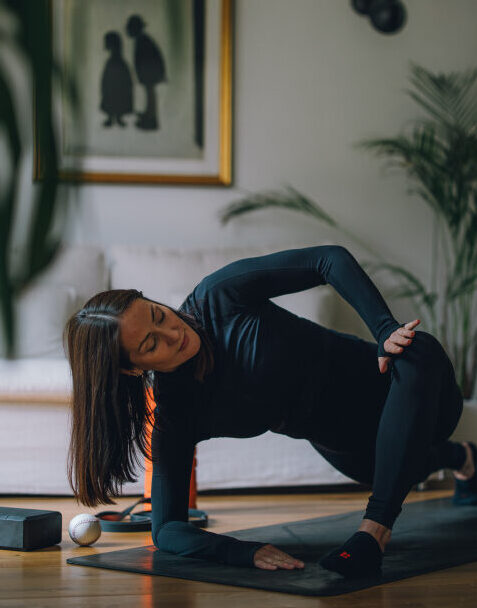The importance of joint mobility
What is Joint Mobility?
So I am sure you will all be familiar with the term flexibility. Many of you may right away be thinking how flexible (or inflexible) you are. After every session it is vital we stretch our worked muscles to avoid injury, so we move our joints through to the far ends of their respective range of motion, often with the help of external passive forces, in order to really engage a deep stretch. Joint mobility is defined as an individual’s ability to control their limbs through their full range of motion. The key difference here, CONTROL. Mobility is based on voluntary movements while flexibility involves static hold with assistance (e.g. gravity, a wall, or maybe your trainer).
A flexible individual may be able to sit on the floor with their legs out straight and pull themselves down to head-butt their knees. But is the hip joint working off its own accord here? Could this same person lie on their back and complete the same movement, bending their straight legs over and touch their knees to their head, without pulling the legs down? A flexible person may not have the balance, core strength, or neuromuscular coordination to perform movements that a person with great mobility can. With this in mind, it is better to be inflexible with good mobility than flexible with poor mobility.

Why is Mobility so important?
Whether you are a competitive athlete or a recreational gym-goer; sport, exercise and many other daily physical practices can reduce your range of motion in many joints. Heavy bench press and bicep curls, for example, cause massive damage to muscle tissue, which is indeed needed to cause hypertrophy (increase in muscle mass) however without adequate stretching and mobility work the tissue will shorten and the ability to move the respective joint through it range of motion under control will be compromised. In regards of more daily activities, sitting at a desk while hunched over a computer will cause a plethora of imbalances and continual pain, from hunched shoulders and a curved thoracic spine (kyphosis), to shortened hamstrings and hip flexors.

So what can we do?
Introducing a simple joint mobility routine into your daily ritual will have a remarkable impact on your well-being. Joint mobility can be seen as general maintenance for your body. Just as a high performance sports car needs oiling, your joints and hinges do too. A joint mobility program will stimulate and circulate synovial fluid within the capsule, “washing” the joint, lubricating the moving parts and removing waste products lingering in unwanted areas. This has the ability to not only prevent injury, but also revitalise your joints.
Use mobility exercises where you move your articulating joints through their full range of motions in a slow, purposeful and controlled manner. These exercises should be incorporated into your exercise program as warm ups, active recovery between sets or as a stand-alone low intensity workout. Even better, start the day moving all your working parts through their ranges of motion, working out all the stiffness from the night before for an energizing morning recharge.
Join BREAKFAST CLUB for the best mobility routines to start your day. Live sessions every Wednesday 6.30am , catch up any time.